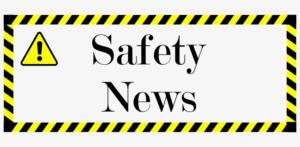
December 2022

12 Holiday Safety Tips

 Keep all decorations at least three feet away from heat sources – especially those with an open flame, like fireplaces & candles.
Keep all decorations at least three feet away from heat sources – especially those with an open flame, like fireplaces & candles.
The best decorations are safe decorations, so when you’re done decoration, make sure not to run cords under rugs or furniture.
If you have a natural Christmas tree, make sure to water it to keep it fresh & safe. 
Always turn off your decorations when you leave home and when you go to bed.
 If you’re using extension cords or adapters that add receptacles, consider having a qualified electrician add more outlets to your home.
If you’re using extension cords or adapters that add receptacles, consider having a qualified electrician add more outlets to your home.
Only use electronics in dry areas. As tempting as it is, you just can’t decorate your aquarium with icicle lights!
Remember that phones and tablets should stay on your nightstand.
Every home needs a working smoke alarm in each bedroom, outside sleeping areas and  on every floor level of your home, including the basement.
on every floor level of your home, including the basement.
If you are using a space heater, be sure to switch it off before leaving the room.
 Inspect your decorations and discard any that are damaged or worn out.
Inspect your decorations and discard any that are damaged or worn out.
Keep batteries stored safely in the original packaging and out of reach of children and pets.
The best gift for your family is an Arc-Fault Circuit Interrupter breaker or outlet. Many electrical fires that occur every year could be prevented by AFCI’s.
Let’s make this Christmas safe!
Put a freeze on winter fires…

Half of all home heating fires occur in December, January and February.
As you stay cozy and warm this winter, stay fire smart! Plug only 1 heat-producing appliance (like a space heater) into an electrical outlet at a time. Make sure you keep anything that can burn at least 3 feet from any heat source.
There is something about the winter months and curling up with a good book by the fireplace. But did you know that heating equipment is one of the leading causes of home fire deaths? With a few simple safety tips and precautions, you can prevent most heating fires from happening.
BE WARM AND SAFE THIS WINTER!
- Keep anything that can burn at least 3 feet away from heating equipment, such as the furnace, fireplace, wood stove, or space heaters.
- Have a 3 foot “kid free zone” around open fires and space heaters.
- Never use your oven to heat your home.
- Have a qualified professional install stationary space heating equipment, water heaters or central heating equipment according to the local codes and manufacturer’s instructions.
- Have heating equipment and chimneys cleaned and inspected every year by a qualified professional.
- Remember to turn portable heaters off when leaving the room or going to bed.
- Always use the right kind of fuel, specified by the manufacturer, for fuel burning space heaters.
- Make sure the fireplace has a sturdy screen to stop sparks from flying into the room. Ashes should be cool before putting them in a metal container. Keep the container a safe distance away from your home.
- Test smoke alarms at least once a month.
Heating Equipment Smarts
Install wood burning stoves following manufacturer’s instructions or have a professional do the installation. All fuel burning equipment should be vented to the outside to avoid carbon monoxide (CO) poisoning.
Install and maintain CO alarms to avoid the risk of CO poisoning. If you smell gas in your gas heater, do not light the appliance. Leave the home immediately and call your local fire department and gas company.
